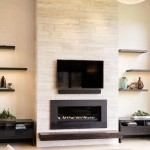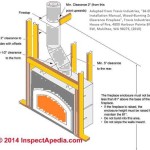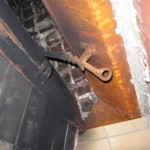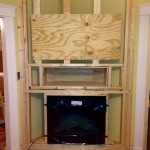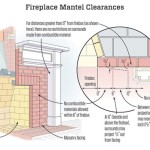Stacked Stone Fireplace Photos: Inspiration and Design Considerations
The allure of a fireplace, a cornerstone of comfort and visual warmth, is amplified by the enduring beauty of stacked stone. Stacked stone fireplaces provide a rustic, yet sophisticated aesthetic, capable of transforming a living space into a cozy haven. Examining stacked stone fireplace photos provides a wealth of inspiration and insight into the design possibilities this material offers. These images showcase diverse textures, colors, and arrangements, helping homeowners and designers visualize the potential impact of a stacked stone fireplace on their specific project.
This article explores the appeal of stacked stone fireplaces, delving into the various design aesthetics they accommodate and the practical considerations involved in their implementation. We will examine numerous examples through the lens of stacked stone fireplace photos, highlighting key elements to consider when planning such a feature in a home.
Aesthetic Versatility: From Rustic to Modern
The versatility of stacked stone is a significant factor contributing to its popularity in fireplace design. Stacked stone readily adapts to diverse architectural styles, ranging from traditional rustic cabins to contemporary minimalist homes. The key to this adaptability lies in the selection of stone type, color palette, and the manner in which the stone is arranged.
Rustic designs often feature natural, irregularly shaped stones with varying colors. Larger stones and pronounced grout lines contribute to a more rugged and organic appearance. Stacked stone fireplace photos illustrating this style often showcase fireplaces that serve as the focal point of a log cabin or farmhouse-inspired living room. These fireplaces are often paired with reclaimed wood mantels and hearths, further enhancing the rustic charm. The colors typically lean towards earthy tones like browns, grays, and tans, creating a warm and inviting atmosphere.
In contrast, modern stacked stone fireplace designs frequently employ sleeker, more uniformly shaped stones with minimal grout lines. Color palettes tend toward monochromatic schemes, such as variations of gray or even stark white. This approach creates a clean and sophisticated look that complements contemporary furniture and décor. Stacked stone fireplace photos of this style often feature long, horizontal stone arrangements that emphasize the linear aspects of the fireplace, seamlessly integrating it into the overall design of a modern living space. The use of accent lighting directed at the stone surface can further enhance its texture and visual appeal.
Furthermore, stacked stone can be incorporated into transitional designs that blend elements of both rustic and modern styles. This might involve using a more refined stone shape with a neutral color palette, paired with a minimalist mantel and a polished concrete hearth. The goal in transitional designs is to achieve a balance between the natural texture of the stone and the clean lines of modern architecture.
Stacked stone fireplace photos provide concrete examples of these diverse aesthetic applications, allowing homeowners to identify design elements that resonate with their personal preferences and architectural style.
Considerations for Stone Selection and Installation
Choosing the right type of stone and ensuring proper installation are crucial for the longevity and aesthetic appeal of a stacked stone fireplace. The selection process involves considering factors such as stone type, color, size, shape, and texture. Installation requires careful planning and execution to ensure structural integrity and a visually appealing finish.
Natural stone options include granite, slate, limestone, sandstone, and quartzite, each offering unique characteristics in terms of color, texture, and durability. Manufactured stone veneer (MSV) is another popular option, offering a more lightweight and cost-effective alternative to natural stone. MSV is designed to mimic the appearance of natural stone, providing a wide range of styles and colors. When selecting a stone type, it is important to consider the overall budget, the desired aesthetic, and the structural requirements of the fireplace.
The color palette of the stone should complement the existing décor and the overall design scheme of the room. Neutral tones like grays, beiges, and browns are versatile and can easily blend with various color palettes. However, bolder colors, such as reds, blues, or greens, can be used to create a more dramatic statement. Stacked stone fireplace photos can assist in visualizing how different color combinations will look in a completed project.
The size, shape, and texture of the stone also play a significant role in the overall aesthetic. Larger stones create a more imposing and rugged look, while smaller stones offer a more refined and detailed appearance. Irregularly shaped stones add a natural and organic feel, while uniformly shaped stones create a more contemporary and structured look. The texture of the stone can range from smooth and polished to rough and textured, depending on the desired effect. Viewing stacked stone fireplace photos can provide clarity on how different stone characteristics translate into a finished product.
Proper installation is essential for ensuring the structural integrity and longevity of the stacked stone fireplace. The installation process typically involves preparing the substrate, applying a mortar bed, and carefully placing the stones in the desired arrangement. Grouting is often used to fill the gaps between the stones, providing additional stability and a more finished look. It is recommended to hire a qualified mason or contractor with experience in stacked stone installation to ensure a professional and durable result.
Factors such as climate and the intended use of the fireplace (decorative vs. functional) will also influence stone selection. For example, areas with frequent freeze-thaw cycles require more durable stone options that are resistant to cracking and spalling. Functioning fireplaces necessitate the use of fire-rated materials and proper venting to ensure safety and efficiency.
Integrating the Fireplace into the Living Space
A stacked stone fireplace should not only be visually appealing but also seamlessly integrated into the overall design of the living space. This involves considering the size and scale of the fireplace, its placement within the room, and its relationship to other architectural features and décor.
The size of the fireplace should be proportional to the size of the room. A fireplace that is too large can overwhelm a small space, while a fireplace that is too small may get lost in a larger room. The height and width of the fireplace should be carefully considered to ensure a balanced and harmonious design. Stacked stone fireplace photos demonstrating different size proportions in various room sizes can be invaluable.
The placement of the fireplace should also be carefully considered. A fireplace located on a central wall can serve as a focal point for the room, while a fireplace positioned in a corner can create a more intimate and cozy atmosphere. The orientation of the fireplace relative to seating areas and traffic flow should also be taken into account to ensure optimal comfort and functionality.
The fireplace should also complement other architectural features and décor in the room. The style and color of the stacked stone should be coordinated with the flooring, walls, and ceiling finishes. The mantel and hearth should also be selected to complement the overall design. Lighting is an important element to consider, as it can highlight the texture and color of the stone and create a warm and inviting ambiance.
Accessories and décor can be used to further enhance the appeal of the stacked stone fireplace. Items such as artwork, candles, and greenery can be placed on the mantel to add visual interest and personality. A comfortable seating area with plush cushions and throws can create a cozy and inviting space around the fireplace.
The goal is to create a fireplace that is not only a beautiful architectural feature but also a functional and inviting element of the living space. By carefully considering the size, placement, and integration of the fireplace into the overall design, homeowners can create a truly stunning and enjoyable living environment. Examining numerous stacked stone fireplace photos can assist in visualizing the possibilities and making informed design decisions.

12 Stacked Stone Fireplace Ideas For Optimal Coziness

12 Stacked Stone Fireplace Ideas For Optimal Coziness
.jpg?strip=all)
Tips And Tools For Professional Stacked Stone Fireplaces

5 Stacked Stone Surrounds Travertine Quartzite Or Marble

Is A Cozy Stacked Stone Fireplace Your Next Dream Project

Pin On Woodworking

Stacked Stone Fireplace 10 Luxurious Design Ideas Stoneyard

Foyer Intérieur Design D Aménagement Avec Parement Pierre Naturelle Inspirationmaison Idmai Home Fireplace Brick Makeover

Nantucket Stacked Stone I Xl Building S

Tips And Tools For Professional Stacked Stone Fireplaces
Related Posts



